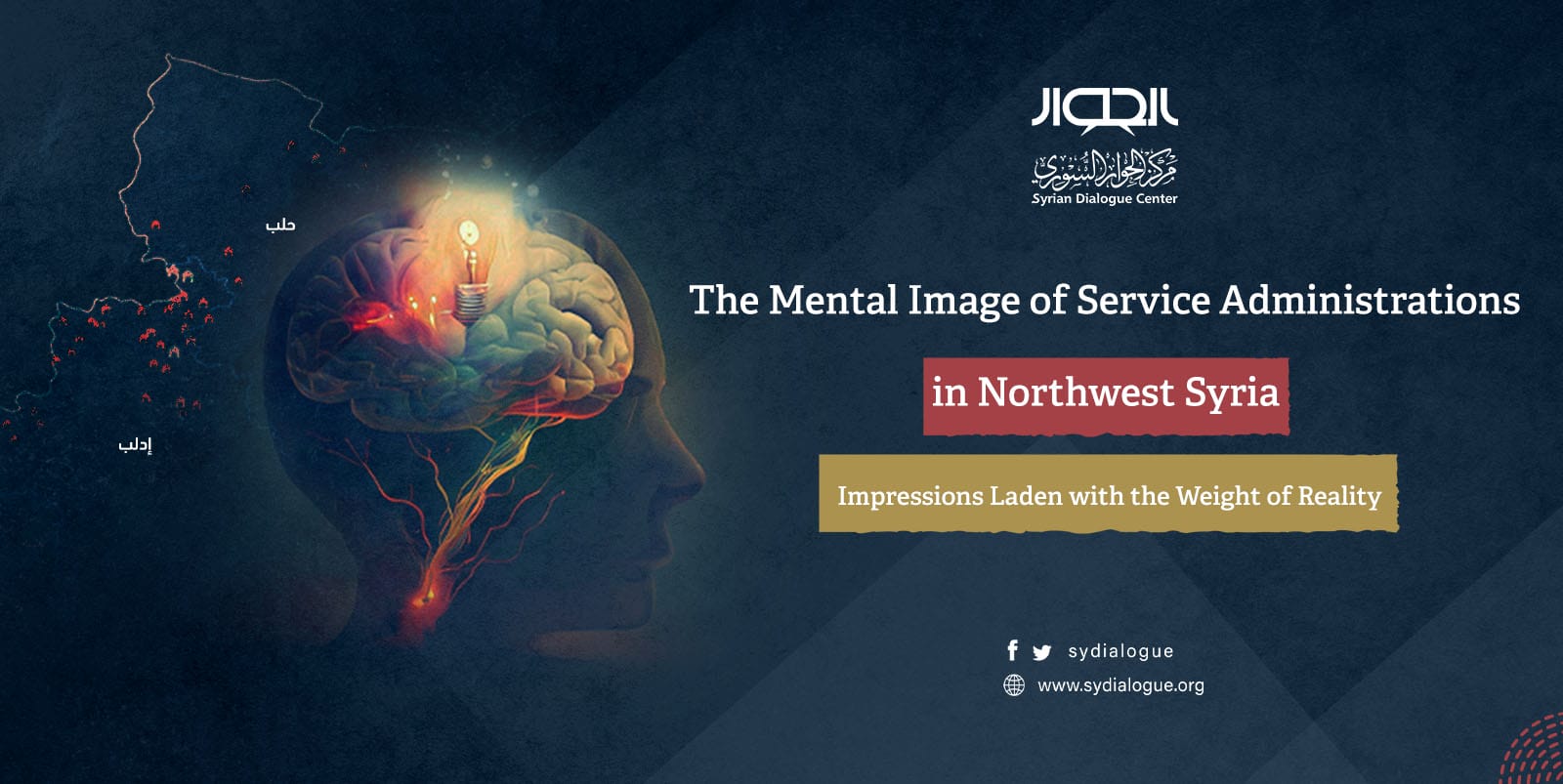
The Mental Image of Service Administrations in Northwest Syria: Impressions Laden with the Weight of Reality
Executive Summary:
The study employed a descriptive-analytical method, relying on qualitative and quantitative sources, to identify the mental image of service administrations in the northwest regions of Syria. It focused on local councils in Turkish-influenced areas and the ministries of the “Rescue Government” in regions controlled by Hay’at Tahrir al-Sham (HTS). The aim was to understand residents’ impressions of these entities, providing a reflective assessment of public opinion toward service administrations and offering recommendations to enhance their image and improve the services they provide.
The study revealed a negative impression among the targeted sample regarding services and governance in the council of Azaz, while the internal and external relations of the council received the highest acceptable impression. In Al-Bab, the overall mental image of the sample tended towards negativity across various sectors.
Furthermore, indicators showed that residents in Afrin leaned towards a negative evaluation of the mental image of the local council concerning service sectors and governance, while their evaluations leaned towards acceptability regarding internal and external relations.
Comparing the mental image indicators of services in the three cities—Azaz, Al-Bab, Afrin—indicated that the negative impression was highest in Al-Bab and Afrin, while the percentage of an acceptable impression was relatively higher in Azaz.
In Idlib, the study indicated that residents’ impressions were relatively “acceptable” concerning service sectors but tended towards negativity regarding governance.
The study clarified that the mental image towards institutions providing services such as water, electricity, sanitation, education, etc., for various segments, was closer to the general impression among the public not affected by personal differences or variables. Even if some differences existed, they did not significantly impact this general impression but merely influenced its ratio.
Regarding sources of the mental image, the study highlighted that source directly associated with the institutions ranked lowest in percentages. Only a third of the sample interacted with these institutions, and less than a quarter followed their publications on their accounts and groups in the social media. This suggests that the sample’s mental image was mostly formed based on external sources reflecting the reality of the institutions, including external social media platforms.
The results did not show a correlational relationship between the number of completed projects and the mental image among the study sample. There was a prevailing negative view, regardless of the number of completed projects. Additionally, there was a relative relationship between increased activity of official accounts and a slight improvement in the mental image within the sample. Negativity in Azaz, Afrin, and Idlib was less compared to Al-Bab.
Read the full report (Arabic)






